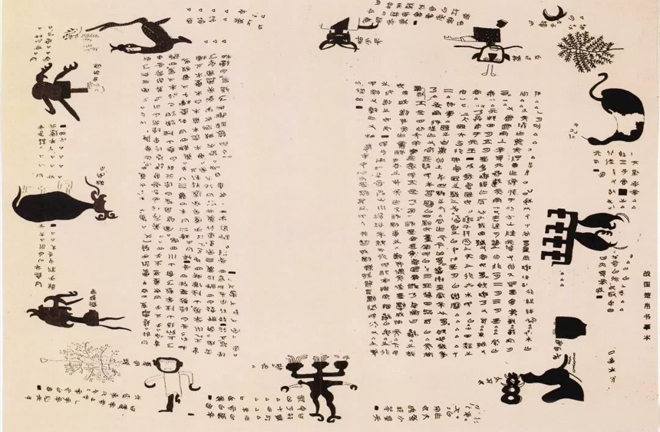Archaeology helps advance the study of ancient Chinese literature

The silk manuscripts of the Chu State were unearthed in Changsha, Hunan Province. Photo: FILE
Traditionally, the study of ancient Chinese literature focuses on works of writers categorized by dynasty. Ever-increasing archaeological discoveries not only enrich the historical materials of ancient Chinese literature, but also broaden the academic horizons of scholars. Some scholars even suggest rewriting literary history on this basis.
Hu Kexian, a professor at the School of Humanities at Zhejiang University, said that unearthed bamboo slips, silk manuscripts and stone inscriptions provide a lot of ancient historical material for academic research. They help restore many historical facts and correct many errors in handed down literature.
Liao Mingchun, a professor at the School of Humanities at Tsinghua University, said that unearthed bamboo slips and silk manuscripts exist in a very large number, and literary documents occupy a big proportion. Li Li, a professor at the School of Humanities at Shenzhen University, added that in addition to literary documents, there also exist many law and divination documents and various non-literary documents about daily life. All this plays an enlightening role in the study of ancient Chinese literature and furthers its study. For example, in Study of Historical Data of the Pre-Qin and Han Dynasties Literature by Cao Daoheng and Liu Yuejin, the introduced Qin and Han stone inscriptions, bamboo slips and silk manuscripts reflect a new academic vision.
Hu said that archaeological discoveries that can be used in the study of ancient Chinese literature mainly include stone inscriptions, hand-copied books, historical sites and material objects. Stone inscriptions mainly refer to tablet inscription, which is both a recording of history and a manifestation of literary art. Hand-copied books are the main source of literature after the period of the bamboo slip and silk manuscript and before the technology of printing was invented. Hand-copied books not only provide textual materials for literary studies but also include important means of literary communication and cultural exchange. Historical sites can provide ancient Chinese literature with a three-dimensional space and a geographical orientation for reference. At the same time, physical objects can be used to study literary art in a broad manner.
Unearthed documents not only create new topics for the study of ancient Chinese literature, but also prompt us to rethink some old problems. From the perspective of literature collation, newly unearthed documents help to solve some original problems concerning characters or phrases. From the perspective of literary history, the newly unearthed documents can fill some gaps in literary history and enrich our understanding, Liao said.
Li said that unearthed literature prompts us to rethink ancient Chinese literature. For instance, in the study of ancient Chinese mythology, the silk manuscripts of the Chu State (a state in the Warring States Period) were unearthed in Changsha, Hunan Province. These manuscripts bring forward the earliest mythological literature on world creation from the Warring States Period (475–221 BCE)to the period of the two Han dynasties (202 BCE–220 CE).
Hu said that current academic circles have adequate focus on integrating archaeological discoveries into history. However, the focus is still relatively weak in the integration of archaeological discoveries into literary studies. To be specific, there are many scholars using archaeological literature to study history. Once unearthed, most archaeological discoveries are classified as historical materials by history scholars. By contrast, scholars in the field of ancient Chinese literature rarely make full use of archaeological achievements. However, it is the mission of literary researchers to integrate archaeological discoveries, historical narration and literary description and to construct new academic systems and paradigms.
Li said that to study ancient Chinese literature with the help of archaeological discoveries, we must see the complication of relevant research methods caused by the interdisciplinary nature of the research objects. Therefore, it is more demanding for researchers in terms of academic accumulation, academic quality and professional quality. For example, the study of ancient Chinese literature through bamboo slips, silk manuscripts and inscriptions may touch on character interpretation and content interpretation while involving research methods in the fields of philology and bamboo slips.
Attention should be paid to the connection between archaeology, history and philology and exploring the motivations and mechanisms that promote the occurrence and evolution of literature. Also, we should expand the scope of the research object, content and form in the study of Chinese ancient literature, Li added.
edited by YANG LANLAN
